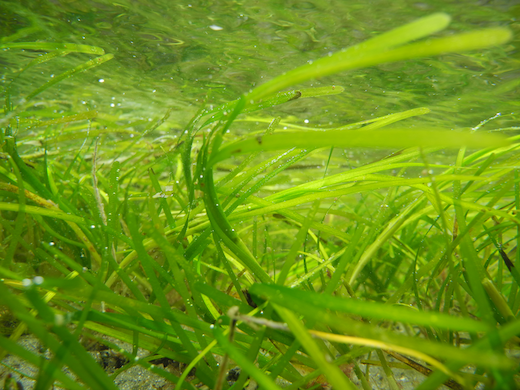Seagrasses are species of aquatic flowering plants
which are grass-like in appearance. Globally there are four families of
seagrass. Zostera from the family
Zosteraceae is the only genus of seagrass present in Ireland. Despite the
grass-like appearance they are more closely related to the pondweeds than the
grasses. Overall two species (sometimes classified as three) are found along
the Irish coast including dwarf eelgrass (Zostera
noltii), the intertidal form of eelgrass (Z. marina Var. angustifolia)
and eelgrass (Z. marina). Eelgrass species can be found in
estuaries, tidal pools and mud flats, where they can form extensive beds. In
Ireland dwarf eelgrass is present mainly in Kerry, Northern Ireland and the
south east of Ireland; eelgrass has a more comprehensive distribution occurring
along the north, south and west coast (National Biodiversity Data Centre,
2014).
The Tralee bay area covers an extensive area, of
which much of the land is protected under European law. The bay is home to a
number of special species ranging from seasonal visitors to permanent
residents. This includes dwarf eelgrass which is of particular importance. Many
other species in the bay depend either directly or indirectly on this species. Root
and rhizome tissues are thought to anchor and stabilize sediment; this enables
beds to exist for many years provided no large disturbances compromise the
area. The relatively consistent environment created by dwarf eelgrass can have
high species diversity; mainly rag worms, lug worms, cockles and small crabs.
In recent years public interest has been growing in
areas of conservation. In the case of seagrasses most public knowledge is
limited and so is active conservation in many areas. The ecosystem services of
seagrass beds are valued at 19,004 $/Ha/year, three times greater than that of
coral reefs (Costanza et al., 1997),
making them worthy of some conservation attention. Eelgrass species have undergone
rapid declines in recent years, from anthropogenic causes as well as a ‘wasting
disease’ that destroyed Z. marina
beds globally. Despite the decline Z.
noltii and Z. marina are listed
as ‘Least Concern’ in the IUCN databases. Local and regional declines in
eelgrass populations are contributing significantly to overall species declines
(Short et al., 2011). The need for
conservation and restoration seems to be at a critical point given the
improvements in water quality over recent years.























